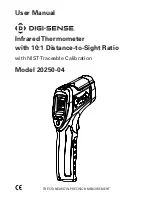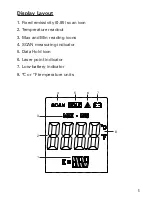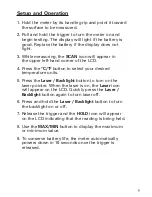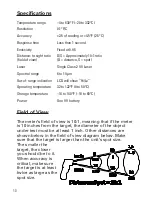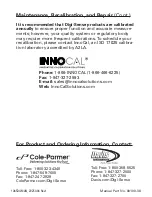
7
Emissivity
Emissivity is a term used to describe the energy-
emitting characteristics of materials. Most (90% of
typical applications) organic materials and painted
or oxidized surfaces have an emissivity of 0.95
(fixed in the unit). Inaccurate readings will result
from measuring shiny or polished metal surfaces.
To compensate, cover the surface to be measured
with black tape or flat black paint. Allow time for the
tape to reach the same temperature as the material
underneath it. Measure the temperature of the tape
or painted surface. (Refer to table on page 8.)
Good Measuring Practices
Holding the meter by its handle, point the IR sensor
toward the object whose temperature is to be mea-
sured. The meter automatically compensates for
temperature deviations from ambient temperature.
Keep in mind that it will take up to 30 minutes for
the IR sensor to stabilize if going from ambient tem-
peratures to a much higher (or lower) temperature
measurement.
Reminders
• The unit is not recommended for measuring shiny
or polished metal surfaces (stainless steel, alumi-
num, etc.). See
Emissivity
above.
• The unit cannot measure through transparent
surfaces such as glass. It will measure the surface
temperature of the glass instead.
• Steam, dust, smoke, etc. can prevent accurate
measurement by obstructing the unit’s optics.

